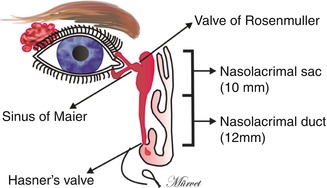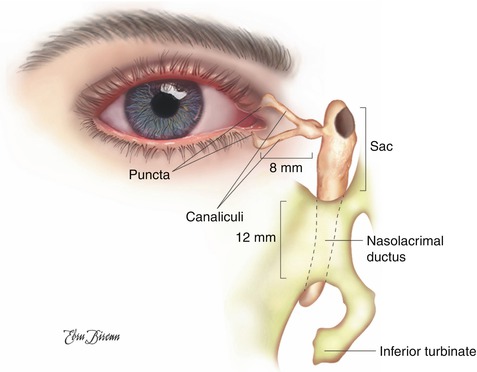Fig. 16.1
Normal anatomy of the nasolacrimal system (Courtesy of TESAV)

Fig. 16.2
Schematic representation of the nasolacrimal system (Courtesy of TESAV)

Fig. 16.3
The palpebral-canalicular pump mechanism in lacrimal elimination (Courtesy of TESAV)

Fig. 16.4
Sump syndrome. If the rhinostomy opening is made too high during DCR operation, the drainage system will not function properly (Courtesy of TESAV)
References
Ahl NC, Hill JC. Horner’s muscle and the lacrimal system. Arch Ophthalmol. 1982;100:488–93.CrossRef
Becker BB. Tricompartment model of the lacrimal pump mechanism. Ophthalmology. 1992;99:1139–1145.PubMed
Burkat CN, Hodges RR, Lucarelli MJ, et al. Physiology of the lacrimal system. In: Tasman W, Jaeger EA, editors. Duane’s foundations of clinical ophthalmology, vol. 2. Philadelphia: Lippincott Williams&Wilkins; 2006. Chapter 2a.
Corin S, Hurwitz JJ, Jaffer N, Botta EP. The true canalicular angle: a mathematical analysis. Ophthal Plast Reconstr Surg. 1990;6:42–5.CrossRef
Stay updated, free articles. Join our Telegram channel

Full access? Get Clinical Tree


